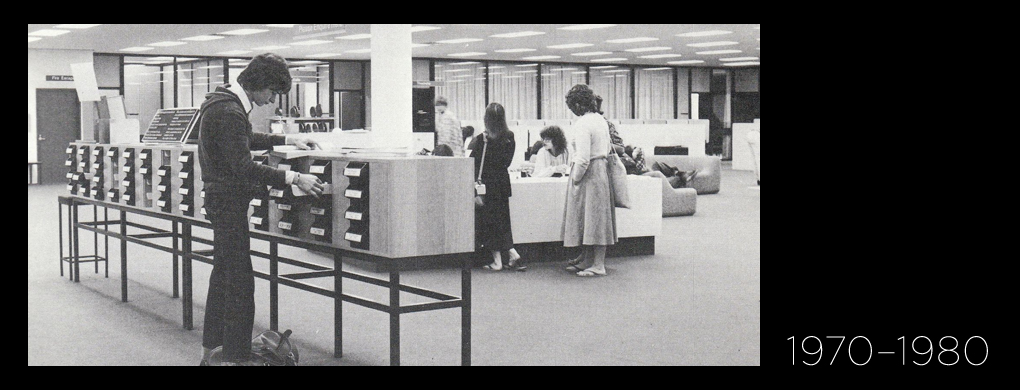Preston Technical College Learning Resource Centre – the model for quality in the 1970s

In July 1974, the Victorian Education Department’s Technical Schools Division chose Preston Technical College to undertake the planning of a model Library Resource Centre (LRC) for TAFE.
The College established a working party with representatives from teaching departments, the existing library, staff development, resources and planning units. For more than twelve months the Working Party met to clarify the philosophy of the proposed LRC and the northern metropolitan TAFE region. The group studied all submissions and data placed before it, and considered the present and future needs of students in an educational setting. Likely changes to the methods of delivery of TAFE programs were also considered, and the needs of students were of primary importance.
The result was the L J Watts Learning Resource Centre (now commonly known as the Preston Campus Library), which became a model facility for TAFE and was regularly visited by professionals wishing to develop their own service along similar lines.
The model Learning Resource Centre was named in honour of the contribution to technical education made by Mr L J Watts, who entered the technical schools field as a teacher at Preston Technical School in 1937, its first year of operation, and later taught at Preston Technical College in 1956. His contribution to curriculum development, classroom teaching methods and student assessment enhanced many lives and he became an inspector of Technical Schools in the late 1950’s. His name lives on in the magnificent Learning Resource Centre at NMIT.
The LRC incorporated a huge area with flexible open spaces that could respond to change and was designed to have a ‘craypot’ effect, spreading out from the front, ground floor, leading students ever deeper into the building where they would find the resources or spaces they needed.
Compared to the inadequate library facilities available in other TAFE institutions at the time, it was an exceptionally generous design with facilities for staff development, teaching and viewing rooms, administrative offices, and educational technology studios for television production, photography, art and design, audio and TV recording and maintenance and repair of equipment.
Finally teachers had the facilities they needed to prepare high quality teaching aids and to tailor their programs to meet individual needs in a wide range of courses. The facility also reflected the importance of providing librarians with sufficient resources to enable them to curate ever increasing specialised educational resources.
The LRC also included a unique mobile library that serviced over 30 access points, used by the Northside Learning Network in the region. The Mobile Librarian took books, tapes, videotapes, notes and equipment including typewriters, computers and video units to community based classes in learning centres, neighbourhood houses, community centres, a sheltered workshop and health centres. This service was a lifeline to college-provided community classes and the mobile library visited each class fortnightly.
References
An introduction to the L.J. Watts Learning Resources Centre: Preston Technical College 1979.
Staff interviews and recollections.